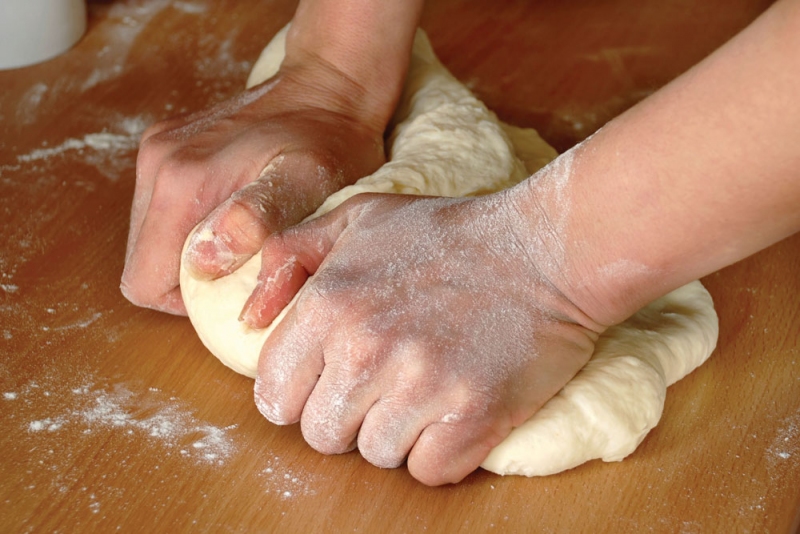- If you’re using a dough press, you’ll need to start with a very soft and relaxed pizza dough to prevent snap-back.
- Even if you’re doing everything right, you still might have to add a reducing agent to your dough.
Related: When your dough comes out wet and sticky
Q: When we press out our dough skins, they keep snapping back. What are we doing wrong?
A: In order to form a pizza skin using a dough press, you must have a very soft and relaxed dough. For starters, if you are using a high-protein/high-gluten flour, you might want to change over to flour with a lower protein content, between 11.5% to 12.8%. The lower protein content will help reduce the memory characteristics of the dough, thus reducing snap-back after pressing.
Secondly, to get the desired soft dough characteristic, the dough absorption should be optimized (this refers to the maximum amount of water that you can add to the dough while still retaining acceptable handling properties). Finally, the fat (oil or shortening) that you add to the dough helps lubricate the dough structure for improved pressing properties. Generally, a fat content of 3% to 5% results in the best pressing properties for dough.
Once these steps are taken, if you still experience excessive snap-back, you will need to add a reducing agent to the dough. There are several options, but agents based on L-cysteine or dead yeast seem to work the best. Be careful when adding any type of dough relaxer, however, as an excessive amount can literally turn an otherwise good dough into soup!
As for managing a dough that will be pressed, try the following steps:
1. Scale and ball the dough immediately after mixing.
2. Place the dough balls in plastic dough boxes and wipe the top of the dough balls with salad oil.
3. Cross-stack the dough boxes in the cooler for at least two hours before down-stacking the boxes.
4. Allow the dough to remain in the cooler for 24 hours, then remove it from the cooler and allow the dough balls to temper at room temperature for about two hours, or until the temperature of the dough balls reaches 50°F.
5. Carefully transfer the dough balls to the press platen and lightly oil the platen as well as the top of the dough ball (a can of spray oil works well).
6. Place the dough ball onto the platen and press with a holding time of about five seconds, using a press temperature of about 250°F.
If you follow these steps, you should be able to eliminate or at least minimize snap-back or shrinkage in your dough skins.













